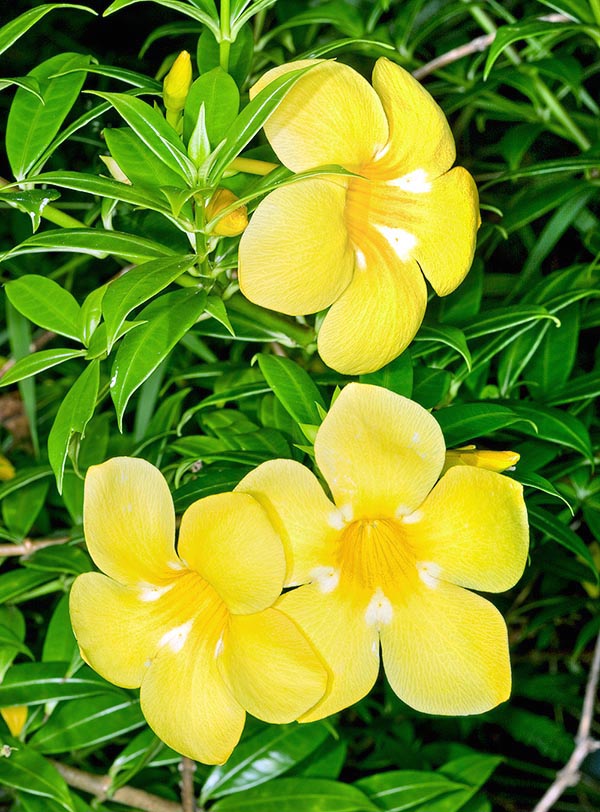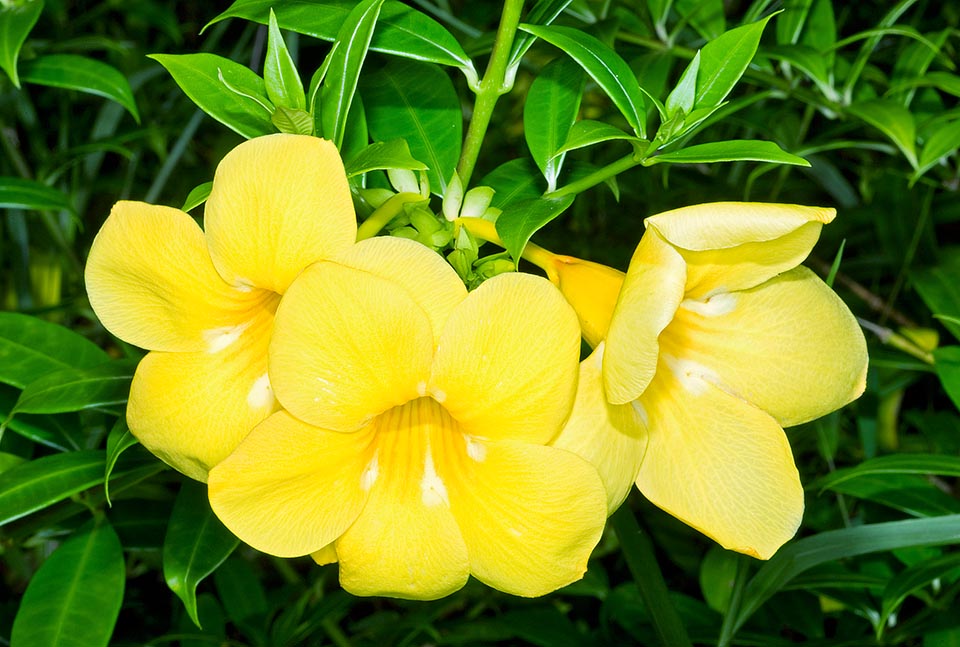Family : Apocynaceae

Text © Pietro Puccio

English translation by Mario Beltramini

Vigourous, evergreen shrub, Allamanda cathartica can be 6 m tall © Giuseppe Mazza
The genus was honoured by Linnaeus to the Swiss naturalist Frederick-Louis Allamand (1736-1803), scholar of the Brazilian flora; the name of the species comes from the Greek “katharticos” = which purifies, with reference to the presumed cathartic properties.
Common names: “allamanda” (Italian); “allamanda”, “golden trumpet” (English); “alamanda-amarela”, “carolina”, “dedal-de-dama” (Portuguese); “trompette d’or”, “liane à lait”, “orélie de Guyane”, “monette” (French); “copa de oro”, “flor de mantequilla”, “trompeta amarilla”, “trompeta dorada”, “trompeta de oro”, “jasmine de Cuba” (Spanish); “Allamande”, “Goldtrompete” (German).
Sarmentose, evergreen, vigorous shrub, which can reach the 6 metres of height, with oblong lanceolate leaves, of a glossy pale green colour, long up to 15 cm; the inflorescences are terminal and axillar with bright yellow flowers of about 8 cm of diameter, produced for a good part of the year. The fruits are globous follicles, of about 6 cm of diameter, thorny, containing several flat seeds provided with a membranous wing; the production of fruits seldom happens outside the warmest areas of the origin zones, for this reason it is normally reproduced by cutting.
Plant of great ornamental value for the tropical, and marginally subtropical, climates, is to be cultivated in full sun and in sandy soils, humid, preferably acid or neutral. Elsewhere it can be cultivated as annual, seen its fast growth, or in pot in order to be sheltered in winter in luminous space with temperatures which are better not to lower under the +15°C. All the parts of the plant are poisonous if ingested, between the substances contained holding medicinal properties, the allamandin has shown to have antileukemic qualities; the latex which comes out from the cuts can cause rashes and allergic reactions to particularly sensitive persons.

Native to South America, is blooming almost all the year with showy bright yellow corollas of about 8 cm of diameter © Giuseppe Mazza
→ To appreciate the biodiversity within the APOCYNACEAE family please click here.
